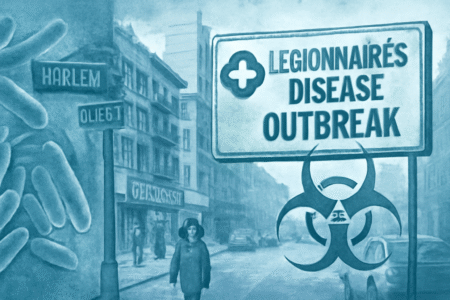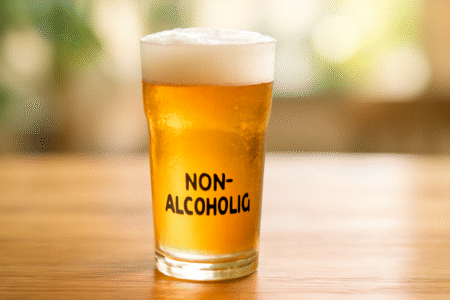As Hurricane Milton makes its devastating approach, Florida finds itself at the mercy of one of the most severe storms in recent years. The Category 4 hurricane has already caused significant destruction, leaving residents grappling with torrential rain, flooding, power outages, and widespread evacuations.

The situation is critical, with emergency services working tirelessly to mitigate damage and save lives.
in Short
The Arrival of Hurricane Milton
Hurricane Milton made landfall near Florida’s Gulf Coast, packing winds of up to 140 mph and a powerful storm surge. The National Hurricane Center warned that the storm could intensify, triggering more damage as it barrels through Florida. With its massive size, Milton has already caused destruction across a wide area, turning roads into rivers and submerging homes. The relentless rainfall has not only flooded communities but also overwhelmed local infrastructure, leading to emergency evacuations and rescue operations.
Severe Flooding Across the State
Flooding is currently the most critical issue, particularly in coastal cities. The combination of Milton’s heavy rainfall and the storm surge has left parts of Florida underwater. Coastal towns like Pensacola, Milton, and Panama City have been severely impacted, with floodwaters reaching up to six feet in some places. Many homes and businesses have been submerged, leading to forced evacuations and urgent rescue missions. Videos and images of the devastation show residents wading through chest-high water, while vehicles float aimlessly in flooded streets.
Also Read : India Mourns the Loss of Ratan Tata: A Visionary Who Transformed Indian Business
Rivers in the region are swelling rapidly, leading to fears of additional inland flooding as the hurricane progresses. Experts have expressed concerns that the situation could worsen as water levels rise and as the storm moves further inland, bringing torrential downpours to already saturated areas.
Power Outages and Infrastructure Damage
Florida’s power infrastructure has taken a major hit due to Hurricane Milton’s high winds and flooding. As of the latest reports, over a million residents are without power, and utility companies are struggling to restore services due to the dangerous conditions. Power lines are down across several major highways, making it difficult for first responders to access areas in desperate need of aid. Several substations have also been knocked offline due to the flooding, further exacerbating the power crisis.
The damage to infrastructure extends beyond power outages. Roads and bridges have been destroyed or severely damaged, hampering evacuation efforts and leaving some towns entirely cut off from the rest of the state. Rescue teams are now using boats and helicopters to reach stranded individuals, further highlighting the dire situation many residents are facing.
Emergency Response and Evacuations
In response to the escalating crisis, Florida Governor Ron DeSantis has declared a state of emergency and deployed the National Guard to assist with rescue operations. Local authorities have issued mandatory evacuation orders for tens of thousands of residents, particularly those in low-lying coastal areas. Evacuation shelters have been set up across the state, but the rapid onset of the flooding has left many unable to reach safety in time. Rescue teams, including those from FEMA, are working tirelessly to assist those trapped in their homes, but conditions remain hazardous due to the storm’s intensity.
Governor DeSantis addressed the state, emphasizing the importance of heeding evacuation warnings and prioritizing safety. “This is a dangerous storm with life-threatening conditions. Please take this storm seriously and evacuate if ordered to do so,” the governor said. He added that Florida’s emergency services are doing everything possible to ensure the safety of its citizens, but warned that the storm’s unpredictable nature makes it difficult to assess the full scale of the disaster.
Fatalities and Damage Toll
As Hurricane Milton’s destruction unfolds, initial reports indicate that there have been several fatalities, with the number expected to rise as rescue efforts continue. The storm’s rapid intensification caught many off guard, making it difficult for all residents to evacuate in time. A number of drownings have been reported in the hardest-hit areas, and first responders are working around the clock to locate missing individuals.
The full extent of the damage is yet to be determined, but early estimates suggest that Milton could cause billions of dollars in damages. Homes, businesses, and public infrastructure have been ravaged, and it will likely take months, if not years, for the affected regions to recover fully.
Moving Forward: The Aftermath and Recovery
As Hurricane Milton continues its destructive path, attention will soon turn to recovery efforts. In addition to ongoing rescue missions, FEMA and other agencies are preparing to provide relief to those affected by the storm. Florida’s residents will need immediate access to food, water, and medical services, as well as long-term assistance in rebuilding their homes and lives.
For many, the recovery process will be slow and painful. The extensive flooding has caused irreparable damage to homes, with many residents losing everything. Experts warn that the economic toll on the state could be significant, particularly for Florida’s tourism and agriculture sectors, which have been hit hard by the storm.
Insurance companies are bracing for a surge in claims as homeowners and businesses assess the damage. Preliminary estimates suggest that insured losses could reach tens of billions of dollars, making it one of the costliest hurricanes in Florida’s history.
Conclusion
Hurricane Milton has proven to be one of the most devastating storms to hit Florida in recent years. The massive flooding, power outages, and loss of life have left the state reeling. As emergency services continue their work, the full scale of the destruction will become clearer in the days to come. What is certain, however, is that Florida faces a long and difficult road to recovery, with countless lives changed forever by the storm’s impact.
FAQs
- How strong is Hurricane Milton?
Hurricane Milton is a Category 4 storm, with winds of up to 140 mph. It has caused severe flooding, power outages, and widespread damage across Florida. - Which areas are most affected by Hurricane Milton?
Coastal cities such as Pensacola, Milton, and Panama City have been hardest hit, with extensive flooding and infrastructure damage reported in these areas. - What are the main concerns in the aftermath of the hurricane?
The primary concerns include ongoing flooding, power outages, and the potential for further casualties as rescue efforts continue. - What actions are being taken to assist residents?
Emergency services, including the National Guard and FEMA, are conducting rescue operations and providing evacuation shelters for displaced residents. - How long is it expected to take for Florida to recover from the storm?
Recovery efforts will likely take months, if not years, with many areas requiring extensive rebuilding due to the severe flooding and damage. - What should residents do if they are still in affected areas?
Residents in affected areas should follow evacuation orders, avoid flooded areas, and stay updated through local authorities for guidance on rescue efforts and relief services.
- How to Stay Healthy During Flu Essential Tips for Every Family
- Satyapal Malik Death on 5 Aug 2025: Political Legacy That Shaped Indian Public Life
- Growing Legionnaires’ Disease Outbreak in NYC’s Harlem Claims Two Lives, Sickens Over 58
- Non-Alcoholic Drink Beer: fresh Alternative with a Unique Appeal
- Meet the Harley-Davidson X440: The Ultimate Desi Roadster
- OnePlus Pad 3: The Android Tablet That Wants Your Laptop’s Job













